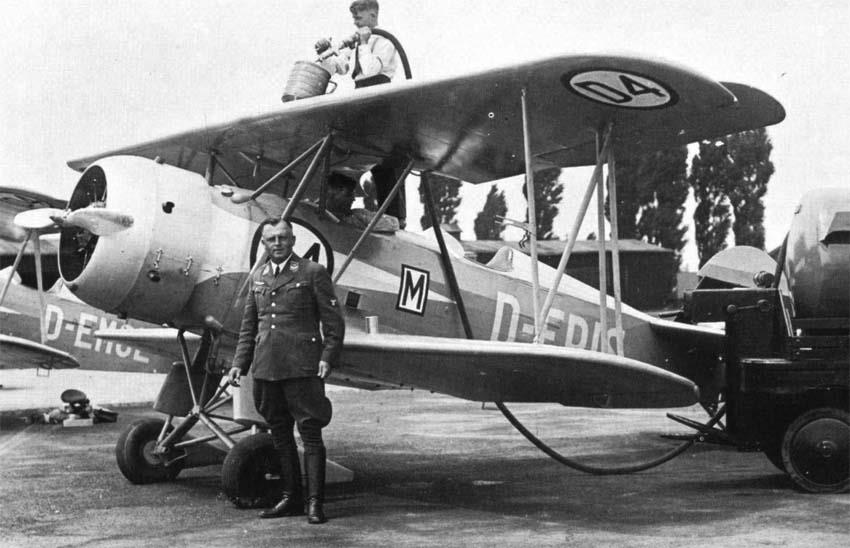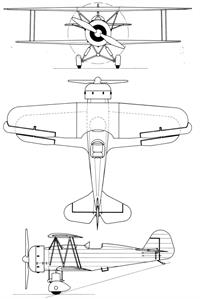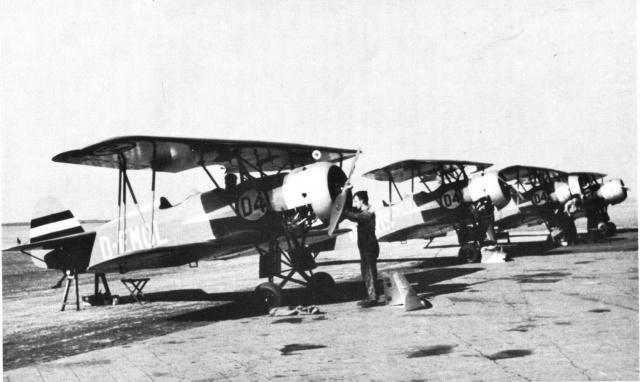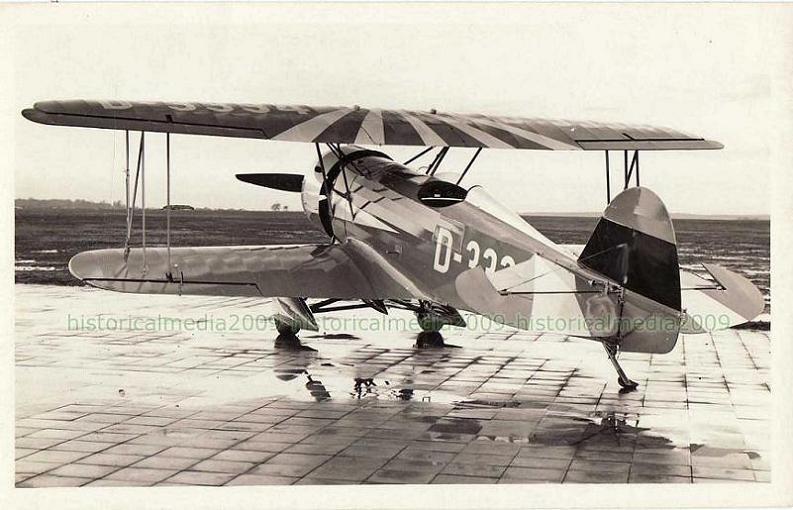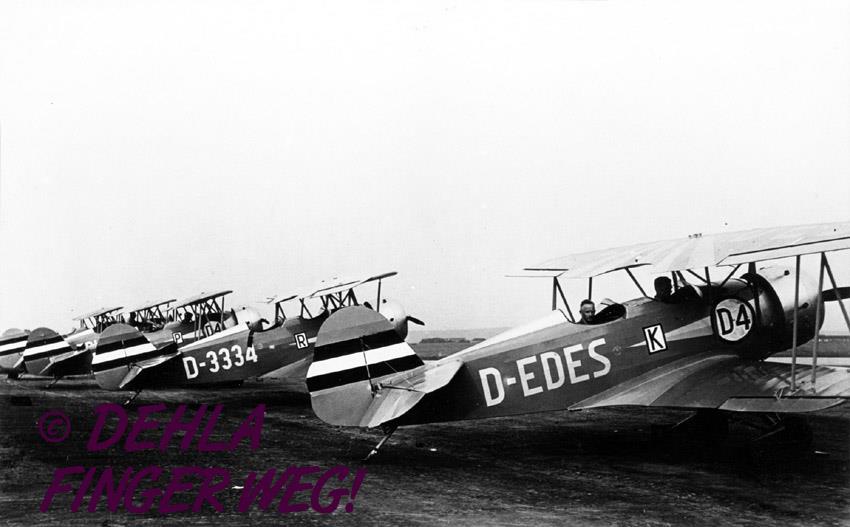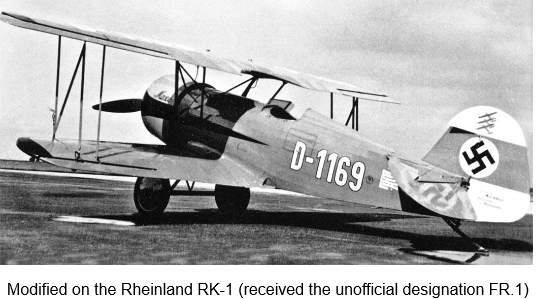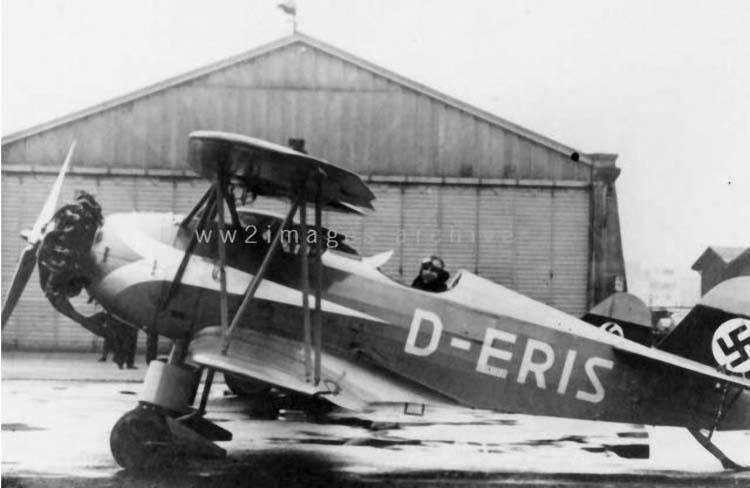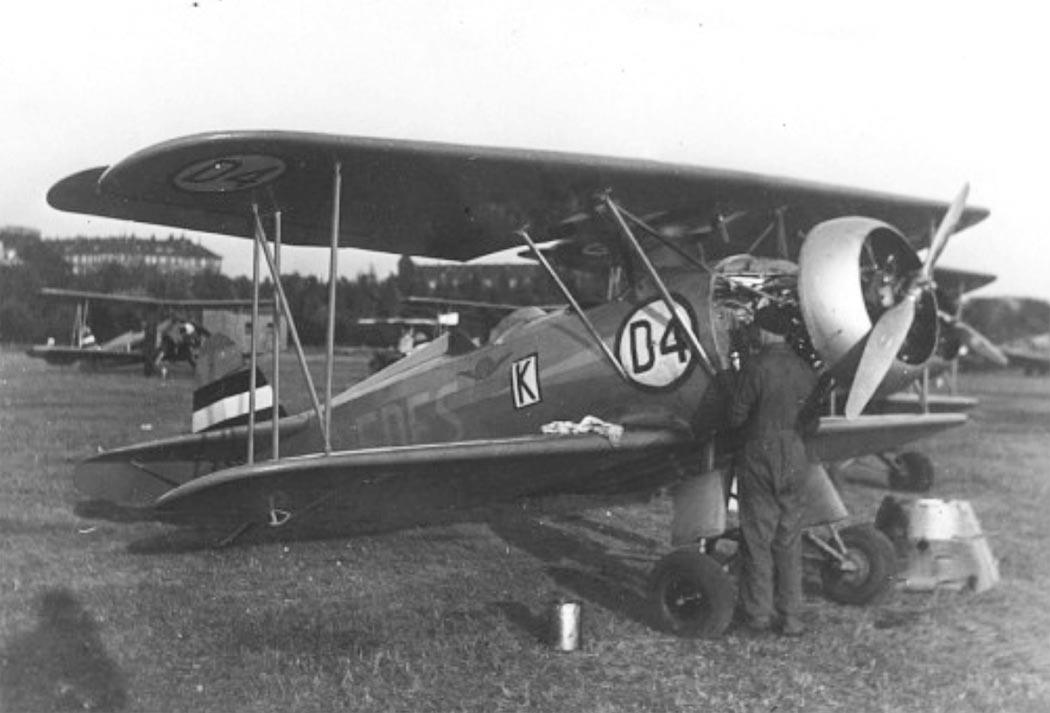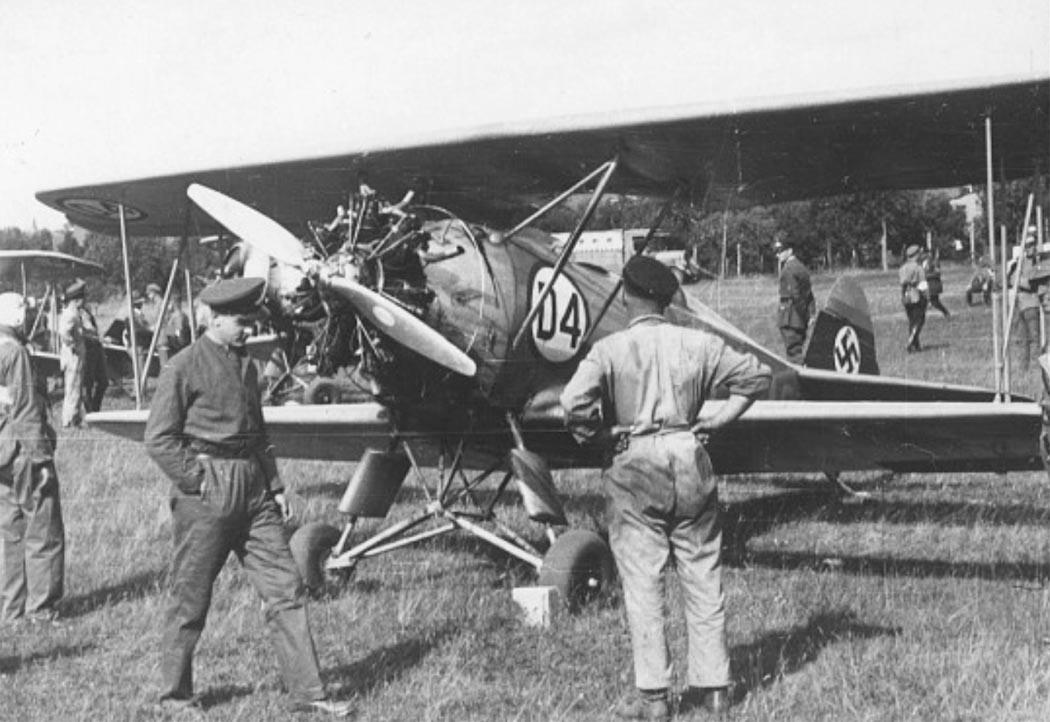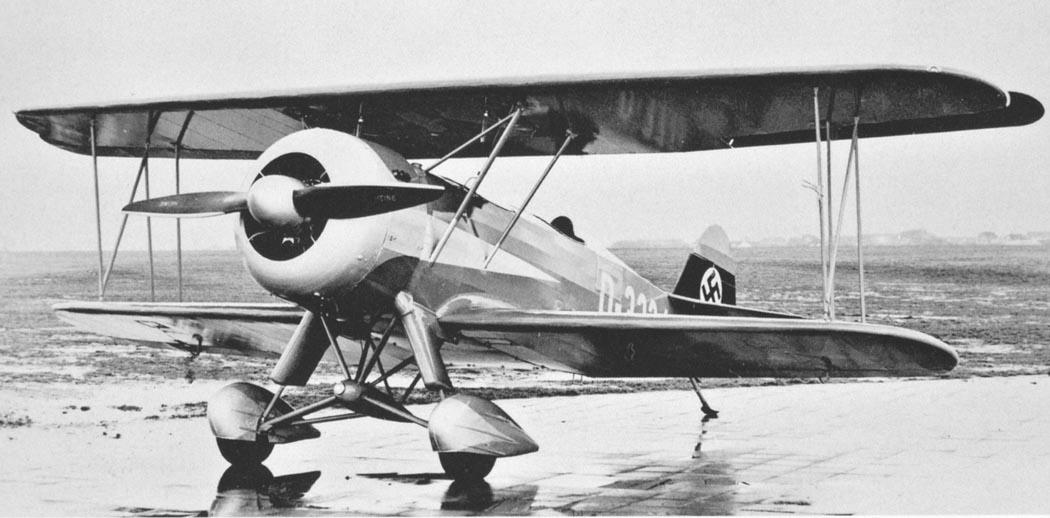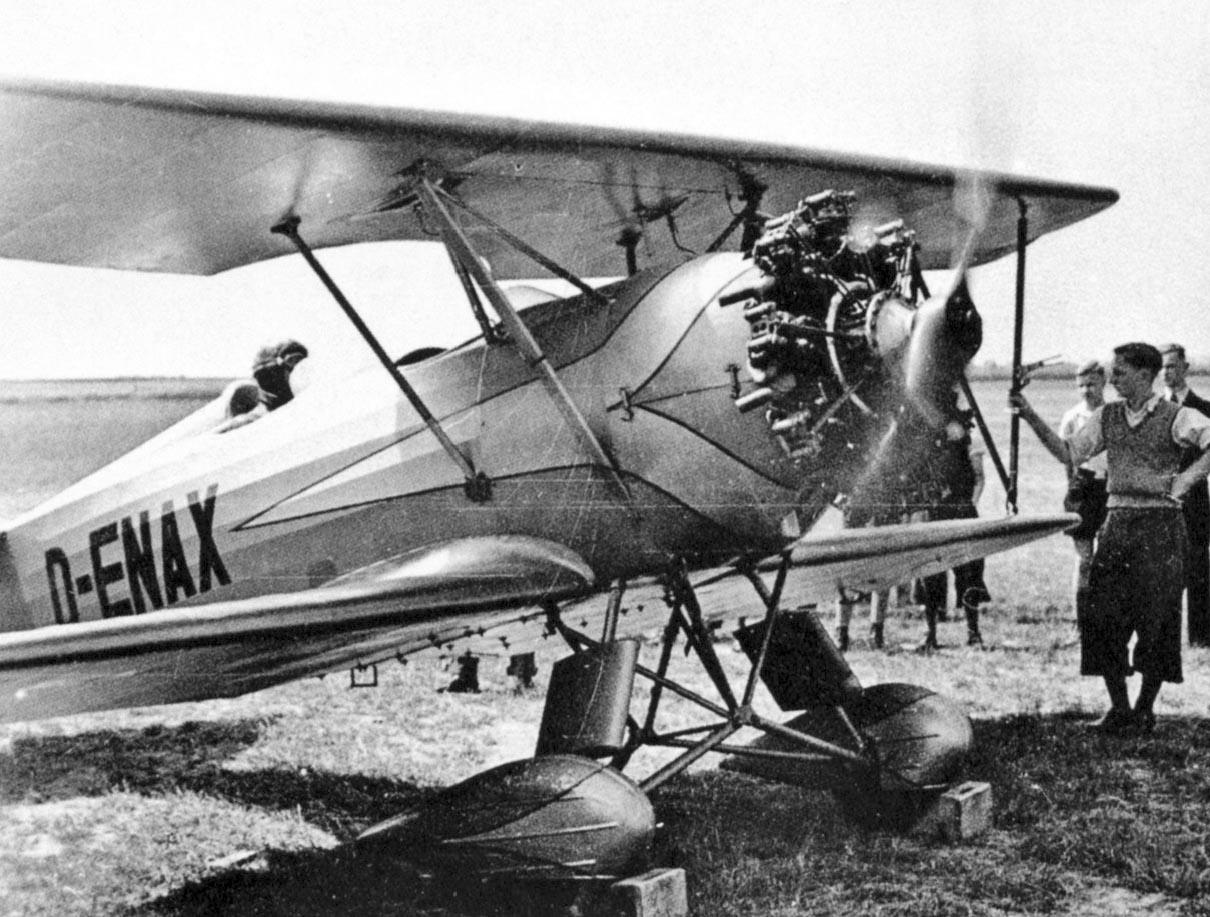| Type |
1-2 seat sportplane |
| Engine |
1 Siemens Halske Sh 14 |
| Dimensions |
Length 6,60 m , height 2,70 m , span 8,40 m , wing area 20,20 m2 , |
| Weights |
Empty 515 kg, loaded , max. take off weight 845 kg |
| Performance |
Max.. speed 205 km/h , cruising speed 175 km/h , range , endurance , service ceiling , climb |
| Type |
Werk.Nr |
Registration |
History |
| FR-1 |
|
D-1169 |
|
|
|
D-EDES |
|
|
|
D-EKAS |
|
|
|
D-EMOL |
|
|
|
D-ERIS |
|
|
|
D-ENAX |
|
|
|
D-3334 |
|
In the races held in Germany in 1934, under the leadership of the commander of the IV link (Düsseldorf), 4 cars of the "Schwalbe" FR 2 type took part . Gentlemen, the pilots had a clear failure, as they were in 20th place and became the "Last Winners". At the same time, they flew in the best conditions (with a closed front seat, in a single version) - the maximum speed exceeded 200 km / h and was about 10% higher than that of the FW 44 and He 72. During the German races, both compared samples were 8 , 9th and 12th places and in the overall standings in the fight against monoplanes took the honorable 8th place.
"Schwalbe" originated from an aircraft of the same name (RK-1 Schwalbe - approx.) Raab-Katzenstein-Werke, equipped with an Sh 12 engine. This biplane, which initially developed a maximum speed of 154 km / h, was not among the most fast. For participation in the races of 1933, they were somewhat modified. At the suggestion of graduate engineer W. Mertens, the Behland-Hannover-owned aircraft of this type at the Fliegerschule Rheinland GmbH flight school in Düsseldorf-Lohausen received improved wing fairings. The engine received a NACA cowl, which brought some success: the speed increased by almost 30 km / h. Increasing engine power by almost 20%, however, was not enough:
After the Raab-Katzenstein-Werke company was liquidated, the Rhineland flight school built a number of copies of an improved type of this aircraft called the Schwalbe FR 2. The aircraft received a Sh 14 engine with a power of 150 hp, they, like its predecessor, had carefully executed wing fairings, NACA cowl and faired landing gear.
Some of the civil registration numbers obtained by Schwalbe FR 2 are known: D-EDES, D-EKAS, D-EMOL, D-ERIS, D-ENAX and D-3334. It is known that of the above machines D-EMOL, D-EDES and D-ERIS took part in the German races of 1934. In addition to these cars, at least one or even 2 other cars took part in the races. 4 aircraft arrived at the target.
The aircraft that took part in the German races of 1934, in addition to the usual identification marks, had an additional marking consisting of letters and numbers in black, indicating the numbering of the squadron inside a five-centimeter ring around a red circle with a diameter of 50 cm, located on both sides of the fuselage and on the upper side of the wing. In the squadron, the aircraft differed from each other due to the red letters applied to the left side of the fuselage, printed on a white background of a quadrangle with a black border. In some photographs, these designations are present on both sides of the fuselage. D-EDES had the letter "K", D-EMOL - "L" and D-ERIS - "M".
None of the FR 2s raced in 1935.
Chassis fairings have been changed many times. One poorly preserved photograph shows an FR 2 with a propeller spinner and reinforced longitudinal ribs undercarriage fairings. Whereas the D-ERIS (M) has a mini conical fairing behind the wheel. Usually the cars flew without landing gear fairings.

